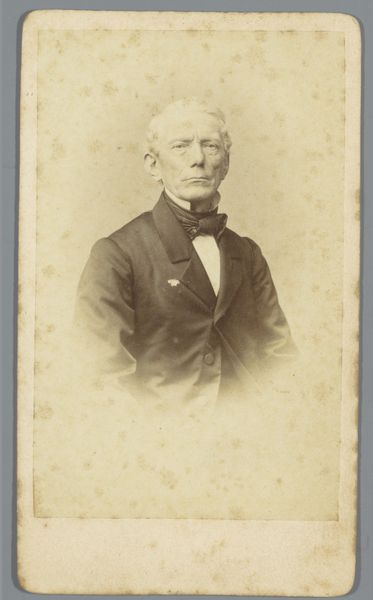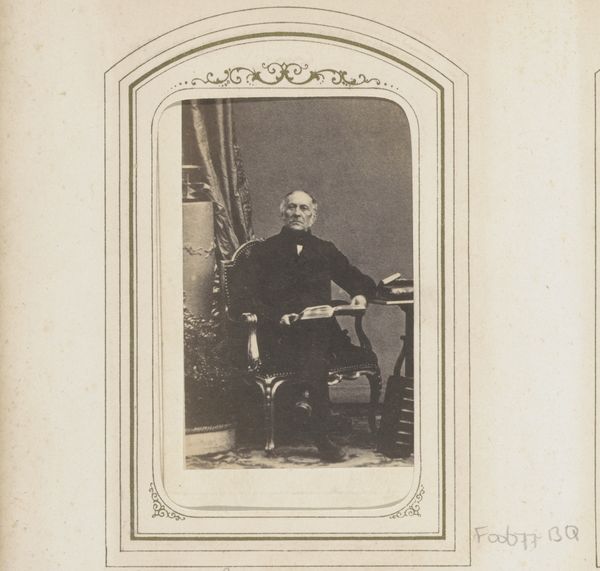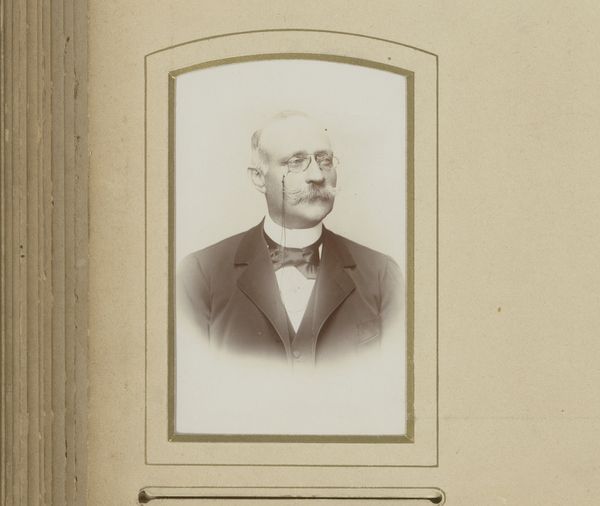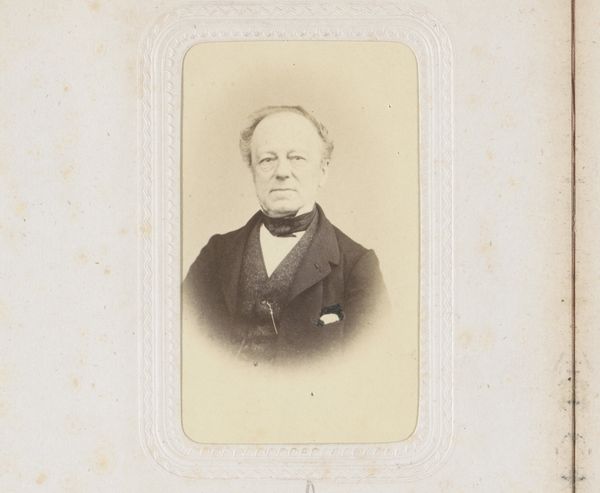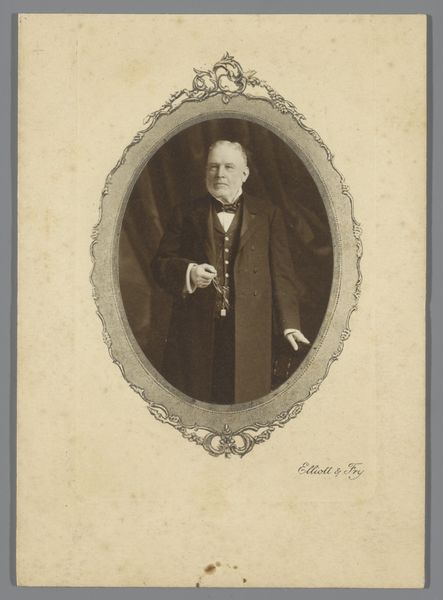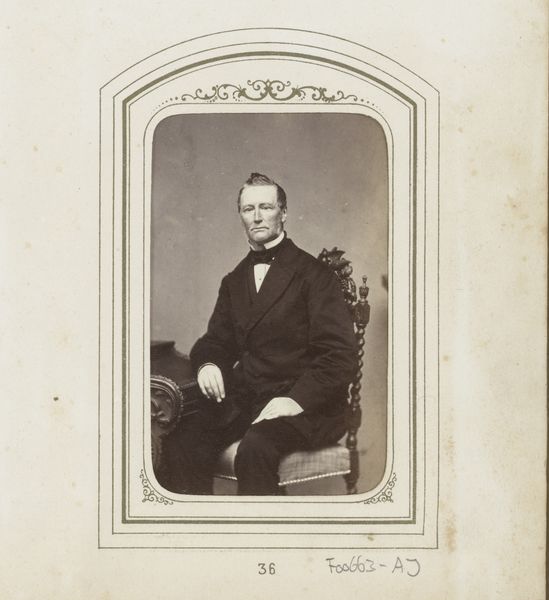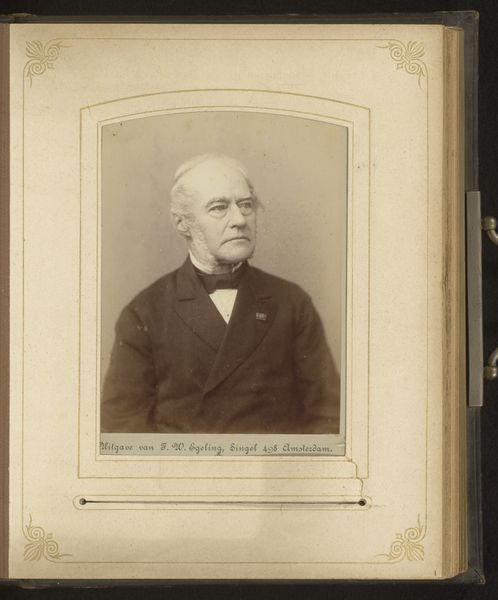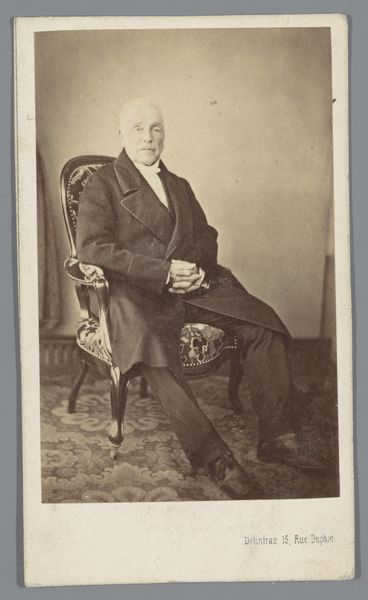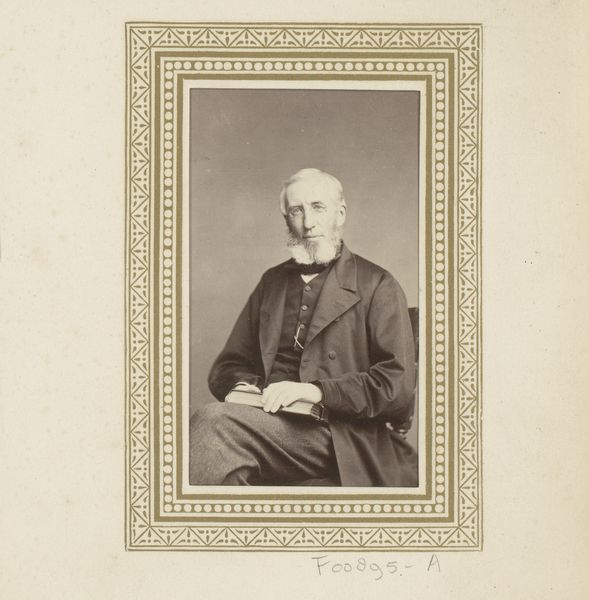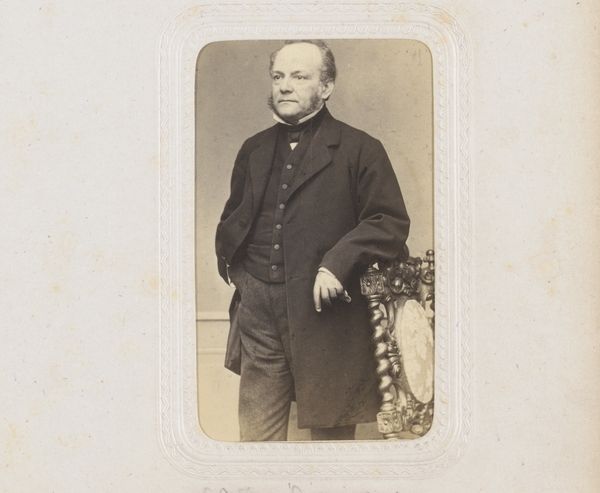
daguerreotype, photography
#
portrait
#
16_19th-century
#
daguerreotype
#
photography
#
geometric
#
orientalism
#
united-states
Dimensions: 21.5 × 16.5 cm (plate, appro×.); 23 × 36 × 1.4 cm (open case); 23 × 18 × 2.5 cm (case); 19.5 × 13.3 cm (image, sight)
Copyright: Public Domain
Curator: This daguerreotype, made around 1855, is titled "Untitled (Freemason)" and the artist is anonymous. Editor: It’s striking, the way the figure commands attention, his Masonic symbols carefully placed to emphasize his presence and belonging. He definitely presents as powerful. Curator: The process is key here. Daguerreotypes, those early photographic images created on silvered copper plates, were incredibly fragile. Think about the material investment, both the physical and the financial kind, required to create even one image like this. Editor: Absolutely. That sense of material investment mirrors the investment he would have in his role. This image operates within a fascinating social context—the Freemasons were a significant force at the time. Consider their influence in business, politics, and social structures, and what the image could suggest about their social dominance. Curator: Precisely, we have to look at the context of photographic production itself. It would have been an incredibly controlled, probably quite uncomfortable experience for the sitter. This really demonstrates that process – everything had to be deliberate, from the posing, the clothing, everything. Editor: Which further underscores the intended message! This wasn’t a casual snapshot, but a deliberate construction of identity. How does the choice of a daguerreotype, with its metallic sheen and aura of permanence, contribute to this message of established authority? It’s interesting to ponder the cultural narrative embedded in this seemingly simple portrait. Curator: Also, we have to look at craft: his sash looks incredible—the details and work it must have taken to construct that… It would have been hand sewn, those stars applied with the intention of communicating a certain meaning through design. Editor: Yes! Consider how that meticulous craft reflects the values of the Freemasons: community, knowledge, the perpetuation of tradition. These details, in effect, build the narrative. This daguerreotype is far more than just a historical object; it’s a testament to the intersecting cultural, social, and political ideologies present in the United States at the time. Curator: I'm thinking of the sheer number of man-hours that went into just the production of all the material components to make the portrait: the metallic plate, the dyes and fabrics, the Masonic garments… amazing. Editor: Agreed, a really complex cultural picture embedded in the photograph, once you pause and consider it.
Comments
No comments
Be the first to comment and join the conversation on the ultimate creative platform.


